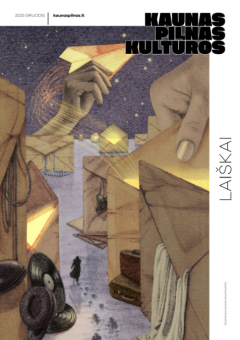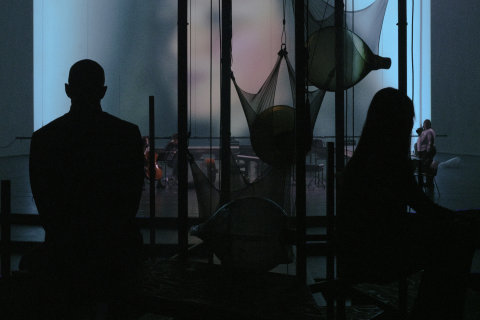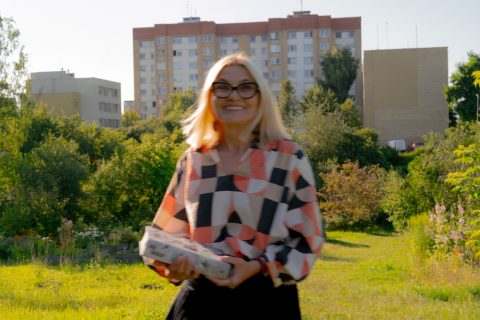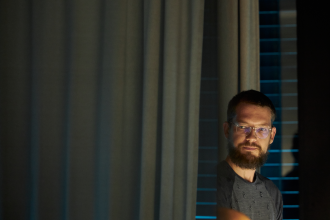One morning, Kaunas woke up and realized that it was no longer the same as it used to be. It noticed that the elderly who used to hide in the bushes, casting wary glances at anyone eyeing their secret garden plots, were gone. It noticed that the people of Kaunas no longer had the habit of throwing unwanted things over the fence into “no one’s” territory. It could no longer find any “empty” places. One morning, Kaunas woke up and realized that all of it was edible and that it breathed differently somehow. It finally understood that it hadn’t always been edible.
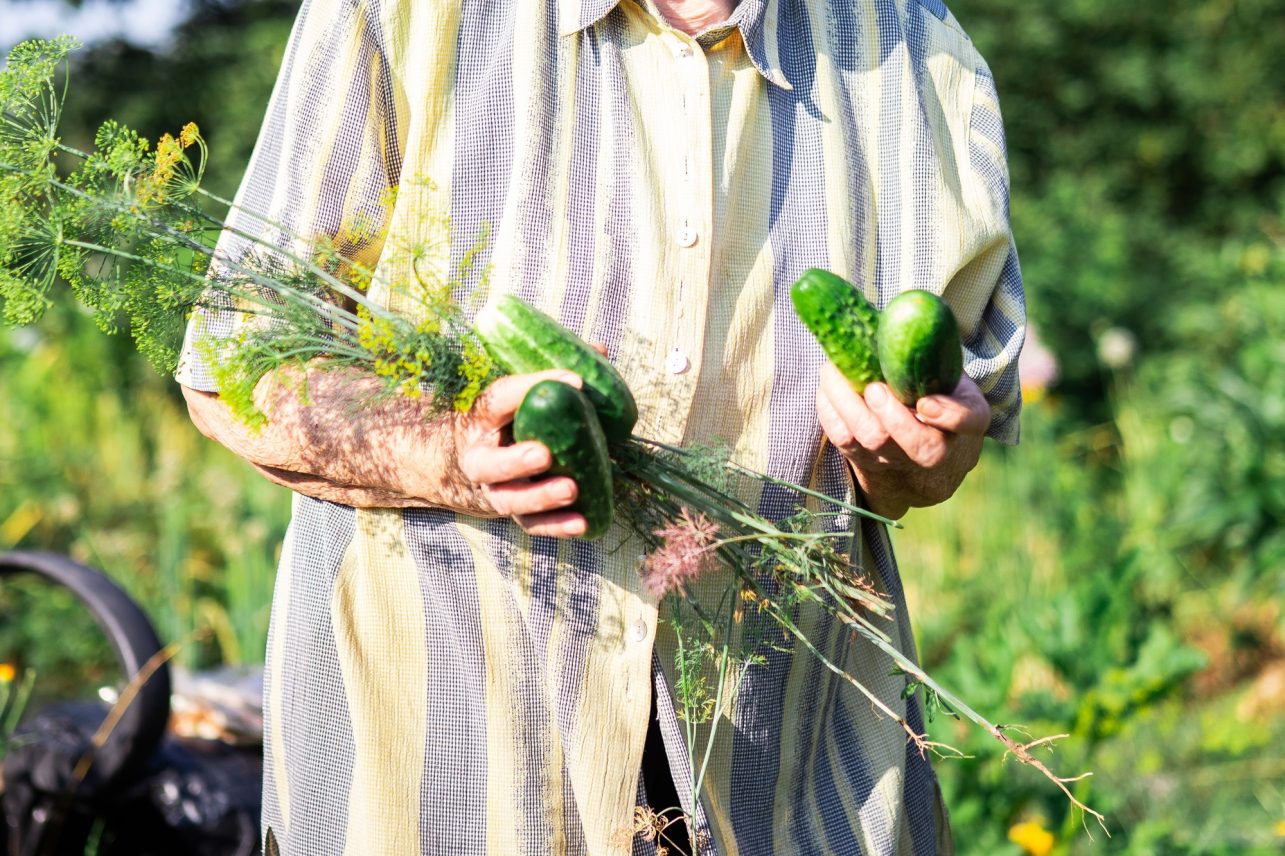
A lot has changed since the first activist gardening initiative in Šilainiai pulled the largest informal and still self-organizing garden community from the clutches of death. The cyclical rhythm of the Šilainiai Gardens initiative, which at first seemed like a strange artistic performance, began to take root and expand spontaneously. Raised garden beds in apartment block districts, in abandoned sports grounds under balconies, and in place of cars began to sprout like mushrooms after rain. Where one appeared in a given year, ten more would spring up around it the next.
At that time, Kaunas was panicking. It snorted. Rolled its eyes. Thrashed like a small child desperately trying to get what it so deeply longed for: a blank, gridded planning sheet – “empty” spaces where nothing existed – the chance to create its dream parks from scratch. Each snort from Kaunas, like the wind, spread the seeds of the edible city ever further, and they germinated quickly. Alongside simple wooden garden beds, information boards began to appear, and Kaunas residents built comfortable public spaces. Various social activities began to flourish there.
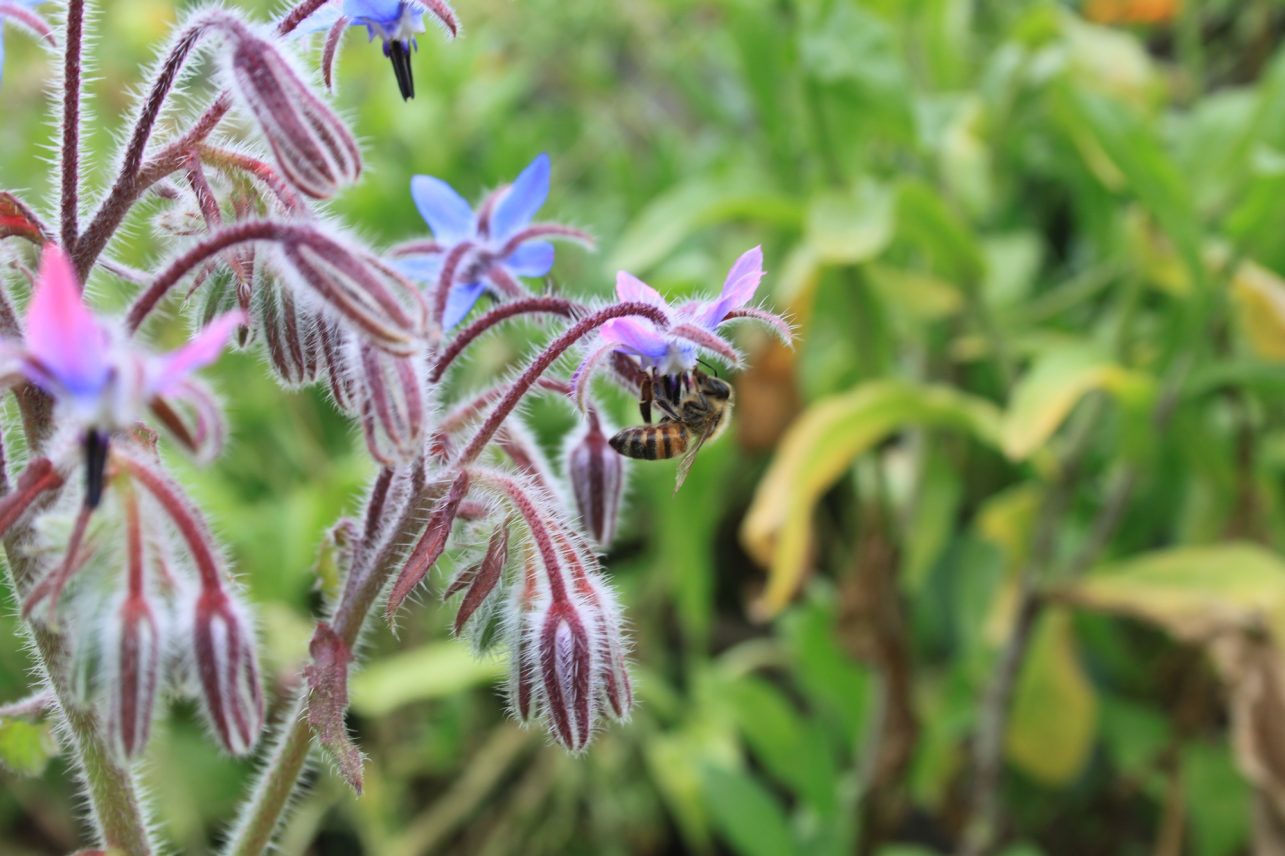
Each public space began to breathe in its own way. In each one, the sun seemed to rise at a slightly different angle. Instead of advertisements, Kaunas bus stops began to display invitations – not to buy McBurgers and colas, but to harvest radishes, join a gardening work-out session, or share knowledge in workshops. Students began conducting field research right here in the city, seeking to understand and explain what was happening. Researchers continuously observed and mapped the changing life in public spaces. The identity of neighborhoods slowly detached from historically preserved architectural forms. Health and community began to serve as an equal counterbalance.
Changes that began in public spaces also seeped through the walls of buildings. Garden therapy became an integral part of hospital patients’ daily routines. Kitchen herb gardens appeared in every home. City markets transformed into flavor laboratories with regular cooking classes. In every neighborhood, space was finally found for a community living room – a non-commercial place, open year-round, for gathering and connection. Even the education system adapted: instead of standardized lessons, Rėda Weeks – a synthesis of generations, land, time, and skills – are held once a season.
Kaunas finally understood that it was shaped not only by investors, architects, and politicians. Kaunas realized how much it had missed by looking only at blueprints. When 〇 activated all of Kaunas’s senses and forced it to lift its eyes from visualizations, the city began to grow curious. Perhaps 〇 is the city’s pulse and constant transformation, something that cannot be planned out on paper? Perhaps it must be worked with in an entirely different way? This is how Kaunas learned – not to clear away illegal gardens, but to be a garden. Its breathing became cyclical: from seed to harvest, from a gaze to a community. 〇 became the city’s clock – not electronic digits on a screen, but the scent of changing soil.

And then something unexpected happened. People began to flock to the city – not only from other parts of Lithuania, but also from abroad. The Swedes were the first to arrive. They were shocked to hear that the city was planning its public spaces not according to the green spaces regulations but based on what was rooted in the community’s daily life. They wanted to find out what a “not at all Scandinavian, but very edible city” could look like. Then the Finns appeared – quiet, yet observant. They spoke little but walked a lot. They were curious about how once-illegal, shameful garden thickets had become a matter of city pride.
All the visitors puzzled over how it could be that the city’s gardening was not centralized but instead grew organically from the ground up. One Danish landscape architect, after visiting, declared that Kaunas might be the first city to abandon the pursuit of “dictatorial visual harmony” at any cost, and instead choose “sensory fullness” – scent, taste, touch, the buzz, and the quiet of the community. And then Kaunas itself experienced this urban cultural phenomenon – 〇 – not a grandiose one-night concert and not a week-long, exhausting festival.
〇 was not invented or created – it was felt, like a pulse. Slowly, as if the city were opening its eyes after a long dream and not immediately realizing that it was already morning. Not planned, but experienced. Not imposed from above, but rising like mist from warm soil. It did not start on the stage; it was awakened by a gesture. It began with the rain that was absorbed into the soil, moistening the seed that had just been planted. 〇 is a celebration without a climax, because every moment of it is both a beginning and a continuation. There are no posters with times and places – the places themselves find the time, and people come not because they were invited, but because something inside called to them. That is how, without any fanfare, Kaunas began to live in the celebration of life.
〇 – no longer a symbol, but the city’s state of being. A festival that does not become a product. A celebration that does not need an opening shot. A cycle that awakens the body’s memory. As if Kaunas had remembered how to live not according to a schedule, but according to the angle of the sun. Not according to construction projects, but according to the crunch of radishes between the teeth. And when Kaunas lives like this, even its asphalt seems softer. Even its silence is full of meaning. Even its newcomers do not feel as if they have arrived, but as if they have been reborn. And so 〇 rotates – not to repeat itself, but to return.
Westerners wanted to take it home with them. They asked, “Do you have a manual? Instructional material? A process plan?” Kaunas smiled, “We have a harvest. We have a conversation. We can bake buns together and tell you about it.” It cannot be exported – only experienced. Because 〇 does not live in documents. It lives in behavior. The Westerners could not believe that what they had been systematizing for a hundred years through plans, regulations, and infrastructures, Kaunas had been stirring through spirit, ritual, and togetherness. And then Kaunas turned to the past – not nostalgically, but with gratitude. It remembered those elderly people who once planted in secret, quietly, breaking hastily imposed rules just so the earth would not stop giving. Now gardens, orchards, and community living rooms bear their names.
And so, with the pulse of 〇, Kaunas lives – not for the sake of perfection, but for life itself. Even on the shortest and darkest day of the year, Kaunas knows – it will live on. Full of flavor. Full of scent. Full of people looking into each other’s eyes.
